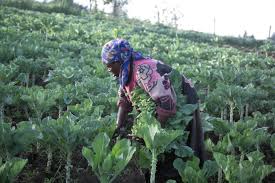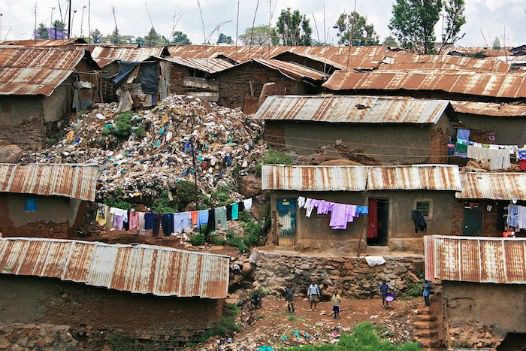Agriculture
Agricultural development in Africa: which way forward?

Ever since the early 1970s there has been mounting dismay at the performance of agriculture in many parts of Africa, leading to a plethora of analyses of what has gone wrong and what should be done to improve matters. Frequently cited explanations include geog- raphy and environmental decline; lack of technology; unfavourable external conditions; lack of effective demand for farm output; continuing government failures that deter investors; and market failures that also deter investment.
Although Africa hardly lacks natural resources, they are not always of high quality and there are some significant natural limitations to agriculture.
Africa is constrained by climate, soil quality, a higher disease burden, and crop diversity. Africa’s climate is by no means pervasively adverse, but there are large areas where rainfall is either too high or too low to productively produce cereals (which were the main ingredient in the “Green Revolutions” elsewhere in the world). High rainfall is associated with increased pestilence and often with poorer soils because of leaching of nutrients (e.g. the Congo basins). The drier parts of southern, eastern and western Africa also largely limit production millet and sorghum, but these cereals are not very productive, and do not seem to have resulted in good high yielding varieties with responsiveness to fertilizer. Other parts of Africa also have fragile soils vulnerable to erosion and non-sustainable farming practices. Irrigation is also rare in Africa and partly constrained by its more mountainous topography. In addition to soil and climate constraints, the tsetse fly, malaria and other tropical diseases have also kept population density low in many areas, and directly constrained labor productivity and livestock cultiva- tion. Africa’s lower population density also meant that farming practices were highly extensive in much of Africa, essentially based on fallow farming as a means of regenerating soil fertility. Hence, there was probably less interest in yield-increasing technologies that drove the Green Revolution.
But some argue that things are getting worse, arguing that natural resources degradation resulting from population growth, (MEA 2005) including cutting of trees for fuel wood, overgrazing and other unsustainable land management practices leading to widespread soil fertility decline (Pender et al, 2006, Koning & Smaling 2005). This takes place while most African farmers already use too little fertiliser to maintain the fertility of their soils (Sanchez 2002, Koning and Smaling 2005). In 2006, a worrying report from the International Centre for Soil Fertility (Henao & Baanante 2006) suggested that African soil nutrients were, on average, depleted five times quicker than they were renewed. Reviving Malthusian arguments, the authors claimed that:
…high population density in many countries already exceeds the long-term population carrying capacity of the land.
Desertification and water scarcity are images frequently associated with Africa. Some populations are indeed strongly affected, and around a quarter of the African population resides in water stressed areas. However, water scarcity in Africa is less severe than in Asia or the Middle East, and large water resources are still unexploited (World Bank 2007). Neo-Malthusian arguments rarely refer to the African continent as a whole, but worries over exhausted natural resources are common for marginal dry lands or highly populated areas.
The key points arising from my review are as follows:
• • Africa suffers badly from hunger: south of the Sahara, FAO estimates that almost one in three is undernour- ished, 265M people in all, while more than a quarter (28%) of children of less than five years are underweight.
• • Agricultural production in Africa has increased only slowly over the last forty years: expressed per person, production has barely increased at all during this time.
• • It would be easy to imagine that the lack of food production has led to hunger, but that would simplify. The association is less direct than may be imagined. It is poverty that leads to hunger, and, together with health and care, that leads to malnutrition, rather than lack of food production. But since so many of Africa’s ‘smart’ subsidies where absolutely necessary — judging which of these, and the mix, in any given circumstance is not easy. Getting effective answers is likely to require trial and error. Government will often need to act to facilitate, to mediate and broker deals between private parties. For some ministries of agriculture and their staff, these are likely to be demanding roles. Yet if the needs are recognised and action taken, the challenges can probably be met.
Last but not least, if the goal of feeding is better nutri- tion, then the health dimensions of nutrition need atten- tion as well as agriculture. Providing access to clean water, sanitation, and simple primary health measures such as immunisation are equally part of the Millennium Development Goals. Given funds and the will, implemen- tation of these is largely straightforward. Ensuring that future generations get a good start in life will, of course, be of great benefit to agriculture in the long run.
What may be concluded for European aid donors seeking to assist African countries, the regional economic commissions and the African Union to stimulate agricultural development? The most obvious point is to fund and support African initiatives: that goes without saying. Beyond that donors, who deal with many countries and contexts, need to recognise the importance of analysis specific to countries and regions within them. They also need to admit that while some things are fairly straight- forward, relatively simple to plan, fund and implement, other important issues require processes of trial and error to find effective solutions in local circumstances. It would be good also if donor efforts could more sustained, allowing enough time for promising developments to become embedded before switching attention and funding to some other issue. Donors could also ensure that more evaluation of development efforts takes place and that the lessons are effectively disseminated across countries.





















Herman
March 27, 2015 at 8:26 am
The Library of Congress’ findings have done nothing to reduce “bricked” iPhones – so be careful Jailbreakers.
There’s an enormous marketplace for for unlocked iPhones and iPhones which
aren’t tied to an AT&T contract.